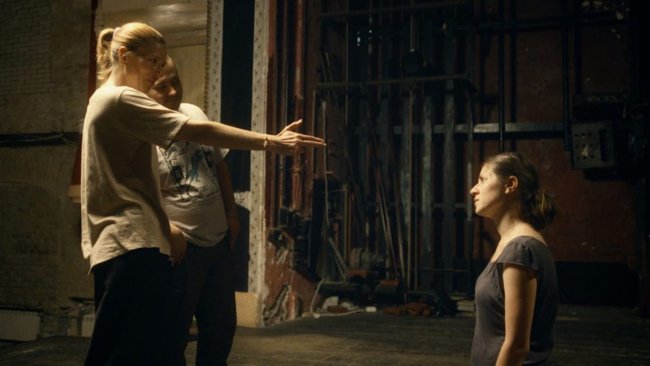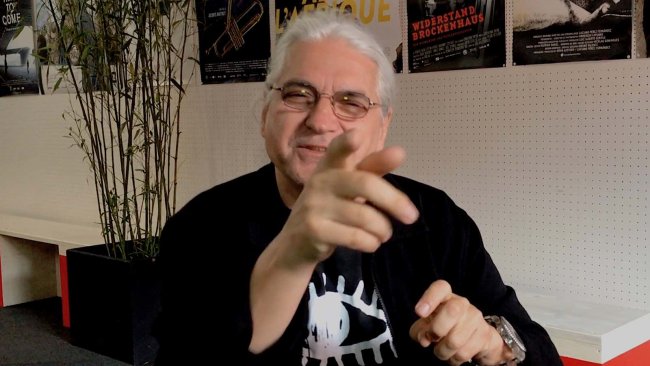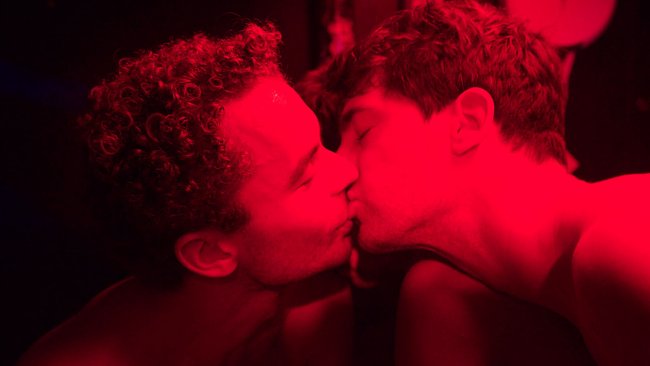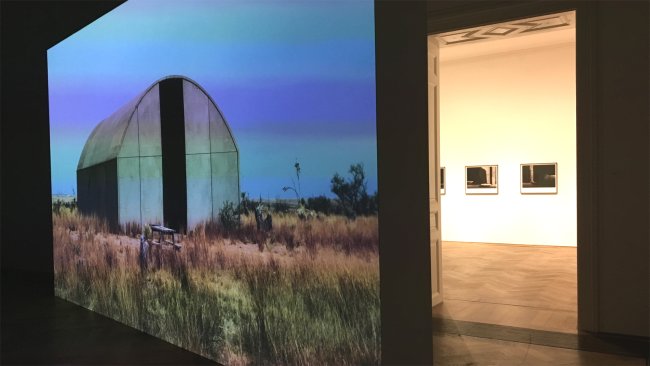Obscuro barroco
[…] The destinies of the protagonists portrayed in the film are in perfect continuity with Rio in a sort of symbiosis – or even an interpenetration – of the personal and the geographical.
[…] And the same metamorphic continuity involves the emotional layer or the affect of the film: the condemning of ghettoization and exclusion flows directly into the joy of celebrating life, the desire for lightness and flight melts into the existential nostalgia for the earth and for a bright consciousness of death.
Text: Giuseppe Di Salvatore
Why does Evangelia Kranioti recur to the often abused notion of “baroque” in presenting her filmic homage to Rio and the transgender world that largely characterizes it? One might respond by referring to the importance of the Rio carnival in the filmic reflections proposed in her film: to the vanity, the redundant, the decorative, and the excess that animate this carnival. It is certainly true, but Kranioti’s Obscuro barroco also contains a deeper answer, which is not explicitly enunciated, but expressed throughout the entire composition of the film. The destinies of the protagonists portrayed in the film are in perfect continuity with Rio in a sort of symbiosis – or even an interpenetration – of the personal and the geographical. Rio’s urbanity is not made-up of straight lines or clear distinctions; it is a wavy landscape in which curves modulate light. It creates an impressionistic picture where colours substitute lines in a nocturnal pulsation where the unknown and the weird joyfully comes to light. The baroque is this curved volume that synthesizes the harmonic shapes and deformations; it is nothing more than transformation.
There are plenty of films and documentaries about transgender people in Brazil, and particularly in Rio. One could find the insistence on the subject annoying, which has somehow already become fairly commonplace. But, Obscuro barroco is a good example of how classical themes can be treated anew, bringing new life to them and giving them a greater significance. Kranioti is able to do that, thanks not only to her encounters with witnesses of exceptional lucidity, but also because of her empathic style of filming. The baroque character of metamorphosis has become an inspiration for her formal choices and it was decisive for the perfect fluidity and continuity of the editing. The imagination of the main protagonists (be the poet and activist Luana Muniz, who plays a central role in the movie, or an anonymous fallen angel) and the documentary pieces of reality conflate as their facial portraits and the urban landscapes constitute one composite picture. The exultant bodies and the masking clothes combine to make a unique surface together with the streets and the facades of Rio. Even the soundtrack shows this continuity between interior and exterior; between the more intimate abstract motives and the festive music of feasts and parties. And the same metamorphic continuity involves the emotional layer or the affect of the film: the condemning of ghettoization and exclusion flows directly into the joy of celebrating life, the desire for lightness and flight melts into the existential nostalgia for the earth and for a bright consciousness of death.
Obscuro barroco is an essayistic pearl. It is a voyage into the often rejected instability of life, its surprising metamorphosis, and its resistance and its fragility. A voyage that we can embark on thanks to Kranioti’s precious work of building a continuity between the formal aspects of the filmic composition and the moving territory that the film explores.
This article contains a third-party video. If you would like to watch the video, please adjust your settings.
Watch
ONLINE STREAMING (Switzerland) by Filmexplorer’s Choice on eyelet.com
Info
Obscuro barroco | Film | Evangelia Kranioti | FR-GR 2016 | 60’ | Luststreifen Film Festival Basel 2018, Everybody's Perfect Film Festival Genève 2019
First published: September 27, 2018






